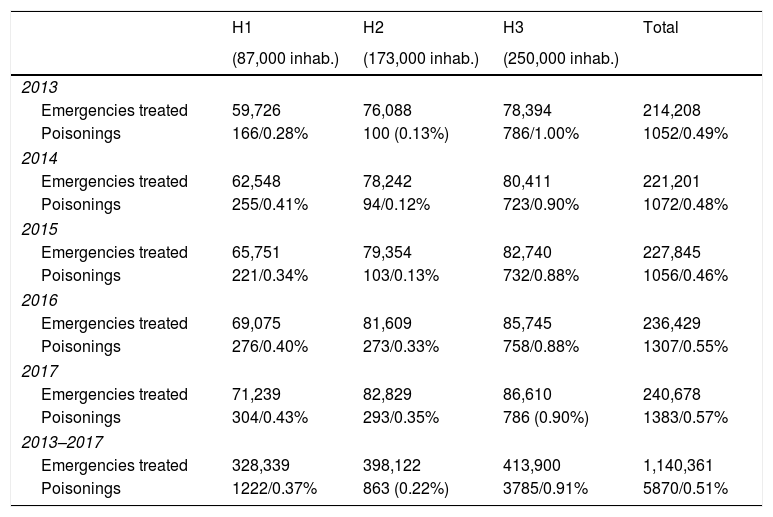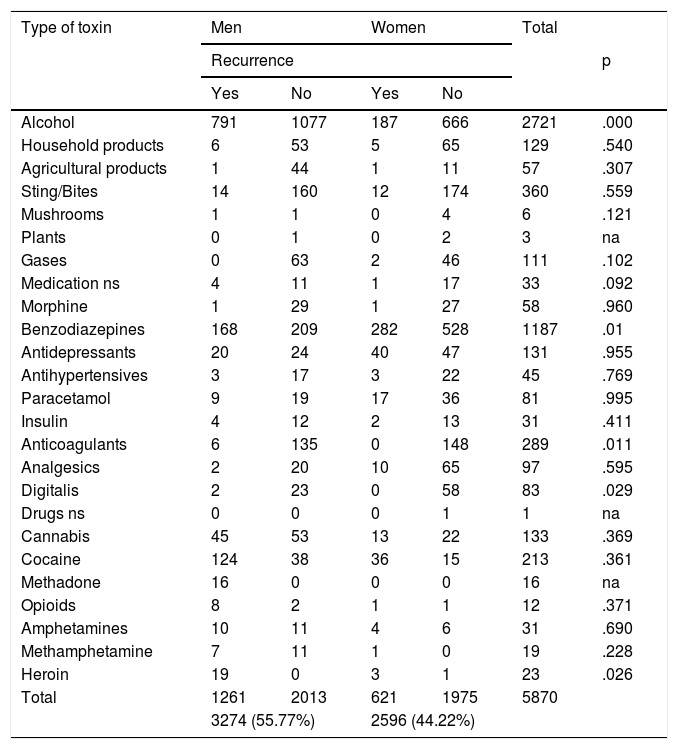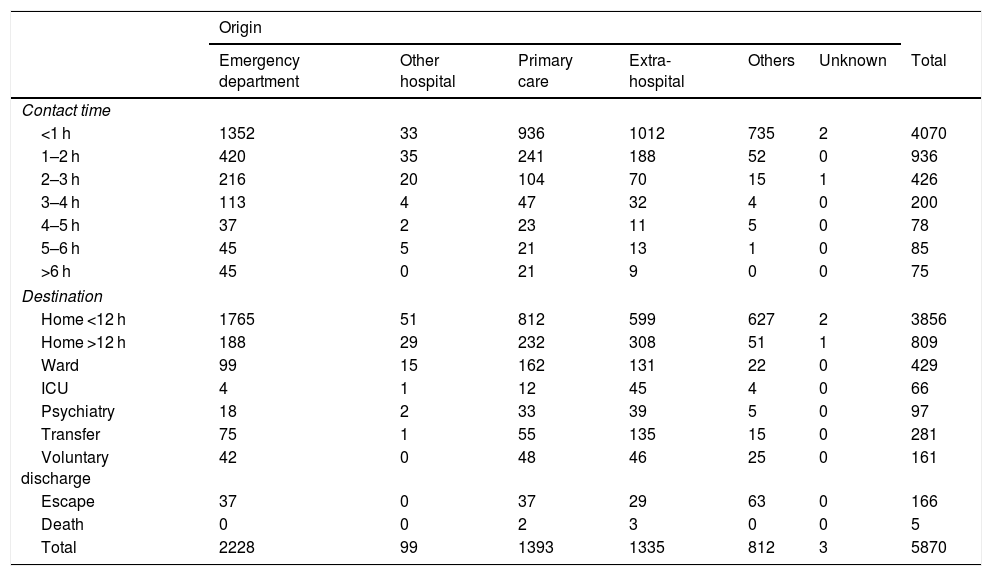To assess the characteristics of acute poisoning cases treated in hospital emergency departments over 5 years.
MethodsRetrospective study of acute poisoning cases treated in 3 hospitals between 2013 and 2017 and an analysis of the demographic characteristics, types of poisoning, seasonal variations, care received and recurrence.
ResultsSome 0.51% of all cases treated in the 3 hospitals corresponded to acute poisoning. The percentages varied by hospital location (0.91% urban, 0.37% coastal and 0.22% rural). Cases of alcohol poisoning had a seasonal character, increasing during the summer on the coast (p < .05). There were differences in the type of poisoning (p < .05) for patients 31 years of age and older in the 3 hospitals. Alcohol represented the largest number of cases in patients 31 years of age and older, except in the rural area where most cases were due to voluntary poisoning in attempted suicide. Men had a higher prevalence of poisoning than women (55.77% vs. 44.23%) for all cases. Alcohol poisoning was in first place for men 30–75 years, and voluntary poisoning for attempted suicide was first for women, except for those 30–46 years of age for whom alcohol was also number one. The large number of cases of recurrence were due to alcohol in men (791 cases) and to benzodiazepines in women (528 cases).
ConclusionsThe number of cases and the type of poisoning varied according to hospital location, season, patient sex and patient age.
Evaluar las características de las intoxicaciones agudas atendidas en urgencias hospitalarias durante cinco años.
MétodoEstudio retrospectivo de las intoxicaciones agudas asistidas en tres hospitales entre 2013 y 2017 y análisis de las características demográficas, tipos de intoxicación, variaciones estacionales, asistencia recibida y reincidencia.
ResultadosEl 0,51% de los casos atendidos en los tres hospitales se correspondieron a intoxicaciones agudas. Los porcentajes varían según la localización del hospital (0,91% urbano, 0,37% en zona de costa y 0,22% rural. Las intoxicaciones alcohólicas presentan cierto carácter estacional, aumentando en época estival en la costa (p < 0,05). A partir de los 31 años de edad existen diferencias en cuanto al tipo de intoxicación (p < 0,05) en los 3 hospitales. El alcohol siempre representa el mayor número de casos a partir de los 31 años, excepto en la zona rural que son las intoxicaciones voluntarias con fines autolíticos. Los hombres muestran mayor prevalencia que las mujeres (55,77% vs 44,23%) para el conjunto de los casos. Las intoxicaciones alcohólicas están en primer lugar en hombres de 30 a 75 años y las voluntarias con fines autolíticos en mujeres, excepto de 30 a 46 años que también es por alcohol. El mayor número de casos reincidentes se producen por el alcohol en hombres (791 casos) y por benzodiacepinas en mujeres (528 casos).
ConclusionesEl número y el tipo de intoxicación varía en función de la ubicación del hospital, la época del año, el sexo y la edad de los pacientes.
Article
Diríjase desde aquí a la web de la >>>FESEMI<<< e inicie sesión mediante el formulario que se encuentra en la barra superior, pulsando sobre el candado.

Una vez autentificado, en la misma web de FESEMI, en el menú superior, elija la opción deseada.

>>>FESEMI<<<











